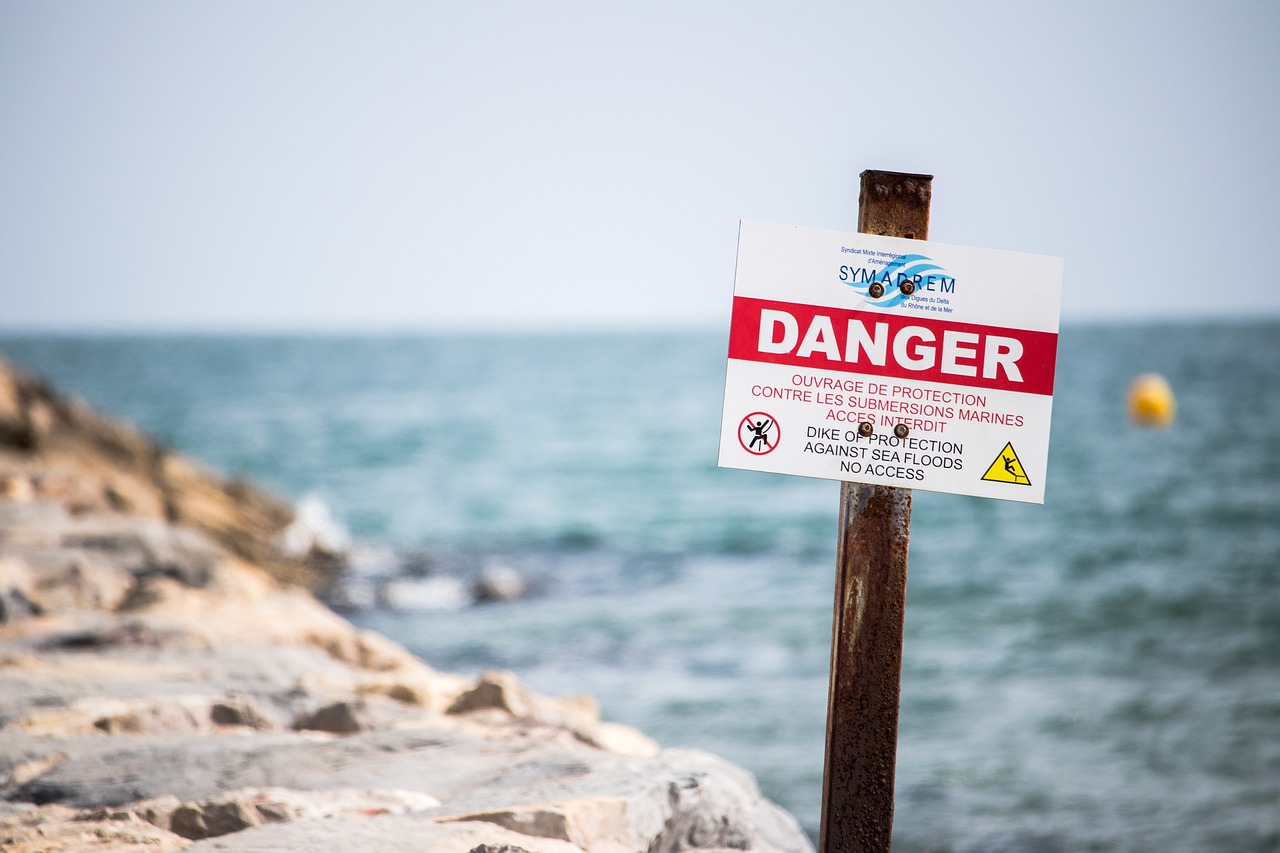Human Behavior and Safety - A Complicated Nexus
The relationship between human behavior and safety is a complex and multifaceted issue that impacts various sectors, from workplaces to public health and emergency response scenarios. At first glance, one might think that safety measures are solely about protocols, guidelines, and rules. However, the reality is that the effectiveness of these measures is deeply intertwined with how people behave, perceive risk, and respond to emergencies. It’s not just about having a safety manual; it’s about the human element that drives compliance and adherence to safety practices.
To illustrate this nexus, consider a workplace where safety protocols are in place. If employees do not perceive these protocols as necessary or relevant, their likelihood of following them diminishes significantly. This scenario highlights the importance of understanding the psychological factors that influence behavior. For instance, cognitive biases such as optimism bias can lead individuals to underestimate risks, while emotional responses like fear can paralyze decision-making in critical situations. Therefore, delving into the psychology of risk perception is crucial for creating effective safety measures.
Moreover, the role of training cannot be overstated. Effective training programs are essential for ensuring that individuals not only understand the safety protocols but also feel equipped to implement them in real-life scenarios. The challenge lies in designing training methodologies that resonate with the employees and foster a culture of safety. This is where behavioral safety approaches come into play, focusing on modifying individual behaviors to promote safer practices.
In addition to training, organizational culture plays a pivotal role in shaping safety outcomes. A robust safety culture encourages employees to prioritize safety and report unsafe practices without fear of retribution. This proactive approach can lead to improved compliance and a collective commitment to maintaining a safe working environment. It’s a reminder that safety is not just a set of rules; it’s a mindset that needs to be cultivated across all levels of an organization.
As we navigate through various emergency situations, the intricacies of human behavior become even more pronounced. Stress, for instance, can significantly impair decision-making abilities when every second counts. Understanding how individuals react under pressure and the dynamics of group behavior during crises is vital for enhancing safety protocols. In essence, the intersection of human behavior and safety is not merely a topic for discussion; it’s a critical area of study that has real-world implications for how we protect lives and ensure well-being.
In conclusion, recognizing the complicated nexus between human behavior and safety is essential for developing effective strategies that enhance safety practices across various sectors. By addressing the psychological, cultural, and behavioral elements that influence safety, we can create environments that not only comply with safety regulations but also foster a genuine commitment to safety among all individuals involved.
- What is the importance of understanding human behavior in safety?
Understanding human behavior is crucial because it helps tailor safety measures that resonate with individuals, ensuring higher compliance and effectiveness. - How can training improve safety compliance?
Effective training equips individuals with the knowledge and skills necessary to follow safety protocols, fostering a culture of safety within the organization. - What role does organizational culture play in safety?
A strong safety culture encourages employees to prioritize safety, report unsafe practices, and engage in proactive safety measures. - How does stress affect decision-making in emergencies?
High-stress environments can impair judgment and decision-making, making it essential to prepare individuals for such situations through training and simulations.

The Psychology of Risk Perception
Understanding how individuals perceive risk is crucial for improving safety measures. Our perception of risk is often influenced by a complex interplay of cognitive biases and emotional responses. These factors shape not only how we understand potential dangers but also how we react to them. For instance, when faced with a safety hazard, some people might underestimate the risk due to overconfidence, while others might overestimate it due to a recent news story about a similar incident. This inconsistency in risk perception can lead to behaviors that either enhance or compromise safety.
One of the key cognitive biases affecting risk perception is the availability heuristic. This mental shortcut leads individuals to assess the probability of an event based on how easily examples come to mind. For example, if someone recently heard about a workplace accident, they might perceive their own workplace as significantly more dangerous than it actually is. This can result in heightened anxiety and unnecessary precautions that may not be warranted, ultimately affecting their productivity and morale.
Another significant factor is emotional response. Emotions can cloud judgment and lead to irrational decision-making. When people are frightened or anxious, they may react impulsively rather than thoughtfully. Consider a scenario where an employee hears a fire alarm; the immediate emotional response might be panic, leading to hasty decisions that could endanger themselves or others. Understanding these emotional triggers is essential for developing effective safety training that prepares individuals to respond calmly and rationally in critical situations.
Moreover, social influences play a pivotal role in shaping our risk perceptions. People often look to their peers when evaluating risks, which can lead to groupthink. In a workplace setting, if most employees downplay the risks associated with a particular task, an individual may follow suit, even if they have reservations. This herd mentality can be dangerous, especially in industries where safety is paramount.
To effectively address these issues, organizations must implement strategies that foster a more accurate understanding of risk among employees. This includes:
- Providing comprehensive training that highlights real-world examples of risks and their consequences.
- Encouraging open discussions about safety concerns to normalize the conversation around risk.
- Utilizing visual aids and statistics to present data in a way that resonates emotionally and cognitively with employees.
By addressing the psychological aspects of risk perception, organizations can cultivate a workforce that not only understands the importance of safety practices but is also motivated to adhere to them. Ultimately, fostering a culture that values accurate risk assessment can lead to more effective safety measures and a significant reduction in workplace accidents.
Q: What is risk perception?
A: Risk perception refers to the subjective judgment individuals make about the characteristics and severity of a risk. It is influenced by cognitive biases and emotional responses.
Q: How do cognitive biases affect safety practices?
A: Cognitive biases can lead individuals to misjudge risks, either underestimating or overestimating dangers, which can result in unsafe behaviors or unnecessary precautions.
Q: Why is emotional response important in safety contexts?
A: Emotional responses can significantly impact decision-making. In high-stress situations, fear or panic can lead to impulsive actions that may compromise safety.
Q: How can organizations improve risk perception among employees?
A: Organizations can improve risk perception by providing training, encouraging open discussions about safety, and using visual aids to present data effectively.

The Role of Training in Safety Compliance
When it comes to ensuring safety in any environment, effective training is not just a nice-to-have; it's a necessity. Imagine walking into a workplace where everyone is aware of the potential hazards, knows how to address them, and feels empowered to act. This is the magic that well-structured training programs can create. Training equips employees with the knowledge and skills they need, transforming them from passive observers to active participants in the safety process. But how do we ensure that training is not only delivered but also absorbed and applied?
One of the key aspects of training is its ability to address various learning styles. People absorb information differently—some prefer visual aids, while others might find hands-on practice more effective. Therefore, a successful training program often incorporates a variety of methodologies, such as:
- Interactive Workshops: Engaging employees in discussions and role-playing can solidify their understanding of safety protocols.
- Simulation Exercises: Realistic scenarios allow employees to practice their responses to emergencies, enhancing their confidence and competence.
- Online Learning Modules: These provide flexibility, allowing employees to learn at their own pace while still being assessed on their understanding.
Moreover, training is not a one-time event; it requires regular updates and refreshers. Just like how you wouldn't expect a car to run smoothly without regular maintenance, safety skills can become rusty over time. Therefore, organizations should implement a system for ongoing training. This can include quarterly safety drills, annual refreshers, or even monthly safety meetings. The goal is to keep safety at the forefront of employees' minds and ensure that everyone is up-to-date with the latest regulations and best practices.
In addition to the content and frequency of training, the delivery method is crucial. Trainers should be engaging and knowledgeable, able to communicate the importance of safety in a way that resonates with employees. If the training feels like a chore, employees are less likely to take it seriously. Instead, trainers should strive to create an environment where employees feel comfortable asking questions and discussing safety concerns openly.
Another essential element is the incorporation of real-world examples and case studies. When employees can see the consequences of unsafe behavior or the benefits of adhering to safety protocols, they are more likely to internalize the lessons being taught. For instance, sharing stories of incidents that occurred due to negligence can serve as powerful reminders of why safety compliance is critical.
Finally, feedback plays a pivotal role in the effectiveness of training programs. After each training session, organizations should solicit feedback from participants. This not only helps improve future training but also makes employees feel valued and heard. When individuals see that their input can lead to changes, they are more likely to engage with the training process actively.
In summary, the role of training in safety compliance cannot be overstated. By employing diverse methodologies, ensuring regular updates, delivering engaging content, using real-world examples, and incorporating feedback, organizations can create a culture of safety that permeates every level of their operation. This not only protects employees but also enhances productivity and morale—making safety a shared responsibility that everyone is invested in.
- What is the most effective training method for safety compliance? The most effective method often combines various approaches, including hands-on training, simulations, and interactive workshops to cater to different learning styles.
- How often should safety training be conducted? Regular training should be conducted at least annually, with additional refresher courses or drills throughout the year to reinforce knowledge and skills.
- Why is feedback important in safety training? Feedback helps organizations improve their training programs and shows employees that their opinions matter, fostering a culture of safety and engagement.

Behavioral Safety Approaches
Behavioral safety approaches are pivotal in transforming workplace environments into safer spaces. These strategies focus on the understanding that individual behaviors directly influence safety outcomes. Imagine a workplace where every employee is not only aware of safety protocols but is also actively engaged in promoting them. This shift in mindset can lead to a remarkable reduction in accidents and injuries. But how do we achieve this? By implementing targeted behavioral safety programs that encourage a culture of safety.
One of the core principles of behavioral safety is the recognition that behavior is often influenced by a variety of factors, including environmental cues, peer behaviors, and organizational culture. For instance, when employees see their colleagues adhering to safety practices, they are more likely to follow suit. This creates a ripple effect, fostering a communal sense of responsibility towards safety. In this context, organizations can leverage positive reinforcement techniques to encourage safe behaviors. By rewarding employees who consistently follow safety protocols, companies can create an environment where safety is celebrated rather than merely enforced.
Another critical aspect of behavioral safety is the use of feedback mechanisms. Constructive feedback plays a significant role in reinforcing safe behaviors and addressing unsafe practices. For example, regular safety audits and performance reviews can provide employees with insights into their adherence to safety protocols. This not only helps in identifying areas for improvement but also empowers employees to take ownership of their safety practices. The key here is to ensure that feedback is timely and actionable, allowing individuals to make necessary adjustments promptly.
Incorporating behavioral safety approaches requires a comprehensive understanding of human behavior. Organizations can benefit from training sessions that highlight the importance of safety and the role of individual behaviors in maintaining a safe work environment. These sessions can include role-playing scenarios that simulate potential safety hazards, enabling employees to practice their responses in a controlled setting. Such experiential learning can significantly enhance retention and application of safety knowledge.
Moreover, it’s essential to recognize that behavioral safety is not a one-time effort but rather an ongoing process. Continuous monitoring and adaptation of safety strategies are crucial to maintaining high safety standards. Companies should regularly assess the effectiveness of their behavioral safety programs and be willing to make adjustments based on employee feedback and changing workplace dynamics. By fostering an open dialogue about safety, organizations can create a culture where employees feel comfortable discussing safety concerns and suggesting improvements.
In conclusion, behavioral safety approaches are vital for cultivating a proactive safety culture within organizations. By focusing on individual behaviors, reinforcing safe practices through positive reinforcement, and utilizing effective feedback mechanisms, companies can significantly enhance their safety outcomes. Remember, safety is not just a set of rules; it’s a mindset that every employee should embody. As we continue to evolve in our understanding of human behavior, the potential for safer workplaces becomes increasingly attainable.
- What are behavioral safety approaches? Behavioral safety approaches are strategies that focus on modifying individual behaviors to improve safety outcomes within organizations.
- How does positive reinforcement work in safety? Positive reinforcement involves rewarding employees for adhering to safety protocols, which encourages them to continue practicing safe behaviors.
- Why is feedback important in safety practices? Feedback helps reinforce safe behaviors and allows for timely corrections of unsafe practices, fostering a culture of continuous improvement.
- Can training improve safety compliance? Yes, effective training programs are crucial for ensuring that employees understand safety protocols and are prepared to act accordingly in various situations.

Positive Reinforcement Techniques
When it comes to promoting safety in the workplace, can be game-changers. Imagine a scenario where employees are not just following safety protocols out of obligation but are genuinely motivated to do so. This transformation can be achieved through effective reinforcement strategies that reward safe behaviors rather than merely punishing unsafe ones. But how exactly does this work?
At its core, positive reinforcement involves recognizing and rewarding desirable behaviors, which can significantly enhance compliance with safety protocols. For instance, consider a manufacturing plant where workers are encouraged to report unsafe conditions. If an employee reports an issue and is publicly acknowledged for their vigilance, it not only boosts their morale but also encourages others to follow suit. This ripple effect can create a culture where safety is prioritized, and everyone feels responsible for maintaining a safe environment.
There are various forms of positive reinforcement techniques that organizations can implement:
- Recognition Programs: Acknowledging employees who consistently adhere to safety standards can be as simple as a shout-out in a team meeting or as elaborate as a monthly awards ceremony.
- Incentives: Offering tangible rewards, such as gift cards or extra time off, can motivate employees to engage in safe practices actively.
- Training Opportunities: Providing further training or professional development opportunities to those who demonstrate commitment to safety can serve as a powerful motivator.
Implementing these techniques requires a thoughtful approach. It's crucial to ensure that the reinforcement is timely and relevant. For example, if an employee goes above and beyond in maintaining safety standards, acknowledging their efforts immediately can have a more significant impact than waiting until the next quarterly review.
Moreover, the effectiveness of positive reinforcement can be enhanced through feedback mechanisms. Constructive feedback not only reinforces safe behaviors but also helps employees understand how their actions contribute to the overall safety culture. When employees receive regular feedback, they feel valued, which can further motivate them to maintain high safety standards.
In summary, utilizing positive reinforcement techniques can transform the safety culture within an organization. By recognizing and rewarding safe behaviors, organizations can foster a proactive approach to safety that not only reduces incidents but also builds a stronger, more engaged workforce. So, why not start implementing these techniques today? The results might just surprise you!

Feedback Mechanisms
In the realm of safety, feedback mechanisms serve as the lifeblood of continuous improvement. Imagine trying to navigate a ship without a compass; that’s what operating without feedback feels like in any safety protocol. Feedback is not just a formality; it’s an essential tool that helps organizations identify what’s working and what’s not. By establishing a robust feedback system, companies can cultivate a culture of safety that encourages open communication and accountability among employees.
One of the most effective ways to implement feedback mechanisms is through regular safety audits and assessments. These audits can be likened to health check-ups for an organization’s safety practices. They allow for the identification of potential hazards and the evaluation of existing safety measures. Furthermore, when employees are involved in the auditing process, it promotes a sense of ownership and responsibility towards safety protocols. This involvement can lead to a more profound commitment to adhering to safety measures, as employees feel their voices are heard and valued.
Constructive feedback is particularly vital in reinforcing safe behaviors. It’s not just about pointing out what went wrong; it’s about guiding individuals toward safer practices. For instance, when a supervisor observes unsafe behavior, addressing it promptly and providing specific suggestions for improvement can make all the difference. Instead of simply saying, “Don’t do that,” a more effective approach would be, “I noticed you weren’t wearing your safety goggles. Let’s make sure you’re protected next time.” This method not only corrects the behavior but also fosters a supportive environment where employees feel comfortable discussing safety concerns.
Moreover, feedback can be gathered through various channels, including:
- Surveys: Anonymous surveys can provide insights into employees' perceptions of safety measures and areas needing improvement.
- Suggestion Boxes: Physical or digital suggestion boxes allow employees to voice their concerns and ideas without fear of repercussion.
- Regular Check-ins: Scheduled meetings focusing on safety can encourage ongoing dialogue about safety practices and foster a culture of continuous improvement.
Implementing feedback mechanisms is not a one-time effort; it requires ongoing commitment. Organizations should regularly review and adapt their feedback processes to ensure they remain effective. This adaptability can be compared to tuning a musical instrument; just as a guitar needs to be tuned for optimal sound, feedback mechanisms need to be fine-tuned to resonate with the evolving needs of the workforce.
In conclusion, feedback mechanisms are indispensable in promoting a culture of safety. By establishing open lines of communication, providing constructive feedback, and continuously adapting to the needs of employees, organizations can significantly enhance their safety practices. Remember, safety isn’t just a set of rules; it’s a shared responsibility that thrives on collaboration and communication.
- What are feedback mechanisms? Feedback mechanisms are processes used to gather information about performance and safety practices, allowing organizations to identify strengths and areas for improvement.
- Why are feedback mechanisms important in safety? They help reinforce safe behaviors, promote a culture of accountability, and ensure continuous improvement in safety practices.
- How can feedback be effectively implemented? Through regular audits, constructive feedback, surveys, suggestion boxes, and scheduled safety check-ins.

Impact of Organizational Culture on Safety
The influence of organizational culture on safety cannot be overstated. It's like the invisible thread that weaves through every aspect of an organization, shaping how employees perceive and prioritize safety. When a strong safety culture is embedded within an organization, it creates an environment where safety is not just a checkbox but a core value. This leads to enhanced compliance with safety protocols and proactive measures that can prevent accidents before they occur.
Imagine walking into a workplace where safety is openly discussed, where employees feel empowered to voice their concerns, and where management actively participates in safety training. In such environments, employees are more likely to adhere to safety practices because they see that their organization genuinely cares about their well-being. On the flip side, in workplaces where safety is treated as an afterthought, employees may cut corners or ignore protocols, leading to increased risks and potential disasters.
To illustrate this point, consider the following table that compares organizations with strong safety cultures against those with weak safety cultures:
| Aspect | Strong Safety Culture | Weak Safety Culture |
|---|---|---|
| Employee Engagement | High levels of participation in safety programs | Low participation, employees feel disconnected |
| Communication | Open dialogue about safety concerns | Limited communication, fear of repercussions |
| Training | Regular, comprehensive safety training | Infrequent or superficial training sessions |
| Incident Reporting | Encouraged and seen as a learning opportunity | Punitive measures discourage reporting |
Furthermore, a strong safety culture fosters a sense of accountability among employees. When safety is a shared value, individuals are more likely to look out for one another, leading to a collective effort in maintaining a safe workplace. This sense of community can be likened to a well-oiled machine; every part works in harmony to achieve a common goal—safety. Conversely, in a weak safety culture, individuals may feel isolated in their responsibilities, which can lead to negligence and increased risk.
In addition to employee behavior, organizational culture also affects how management responds to safety issues. In organizations that prioritize safety, leaders are proactive in addressing potential hazards and are open to feedback from employees. They view safety as a continuous improvement process rather than a one-time effort. This proactive approach not only mitigates risks but also builds trust between employees and management, creating a more resilient organization.
Ultimately, the impact of organizational culture on safety is profound. Organizations that cultivate a strong safety culture not only protect their employees but also enhance their overall performance. The financial implications are significant; reduced accidents lead to lower insurance costs, fewer lost workdays, and a more engaged workforce. In the long run, investing in a robust safety culture is not just a moral obligation—it’s a strategic advantage.
- What is organizational culture? Organizational culture refers to the shared values, beliefs, and practices that shape how members of an organization interact and work together.
- How can I assess my organization's safety culture? You can assess your safety culture through employee surveys, safety audits, and by analyzing incident reports to identify patterns and areas for improvement.
- What are some effective ways to improve safety culture? Implementing regular training, fostering open communication, encouraging employee involvement in safety programs, and recognizing safe behaviors are effective strategies.

Human Factors in Emergency Situations
When the unthinkable happens, and chaos reigns, how we react can mean the difference between life and death. Human behavior during emergencies is a fascinating yet complex subject that delves deep into our psychological and social responses. It's not just about what we do, but why we do it. Have you ever wondered why some people freeze in the face of danger while others spring into action? The answers lie in a myriad of factors that shape our decisions under pressure.
One of the most significant influences on our behavior during emergencies is stress. In high-pressure situations, our brains can become overwhelmed, leading to impaired decision-making. Imagine trying to solve a complex math problem while someone is yelling at you; that’s what it feels like for many when panic sets in. Stress can cloud judgment, making it hard to think clearly or act rationally. Studies have shown that in emergencies, individuals may experience a range of stress responses, from fight-or-flight reactions to complete paralysis. Recognizing these responses is crucial for training and preparedness.
Moreover, the social dynamics at play during an emergency cannot be overlooked. People often look to those around them for cues on how to respond. In a group setting, this can lead to both positive and negative outcomes. For instance, if one person takes charge and begins to direct others, it can create a sense of order amidst chaos. However, if the group is paralyzed by fear or confusion, it can lead to collective inaction. Understanding these dynamics is vital for effective emergency response planning. Here’s a quick breakdown of how group behavior can influence emergency situations:
| Group Behavior | Impact on Emergency Response |
|---|---|
| Leadership | Provides direction and reduces chaos |
| Panic | Can lead to mass hysteria and poor decision-making |
| Communication | Clear communication can enhance coordination |
| Social Support | Encourages individuals to act and helps reduce stress |
Furthermore, preparedness plays a pivotal role in shaping human behavior during emergencies. Those who have undergone training are often better equipped to handle crises. Training not only instills knowledge of safety protocols but also builds confidence. Imagine knowing exactly what to do when the fire alarm goes off; it’s like having a roadmap in an unfamiliar city. Preparedness reduces uncertainty, which is a major contributor to panic.
In addition to training, creating a culture of safety within organizations can foster better responses during emergencies. When employees feel valued and know that their well-being is a priority, they are more likely to adhere to safety protocols and respond effectively in crises. This culture can be nurtured through regular drills, open communication about safety concerns, and supportive leadership. In essence, when people feel safe, they are more likely to act safely.
To sum it up, the interplay of stress, social dynamics, preparedness, and organizational culture creates a complex web of factors that influence human behavior in emergencies. Understanding these elements can significantly improve our response strategies and ultimately save lives. So the next time you think about emergency preparedness, remember that it’s not just about having the right equipment or plans in place; it’s also about preparing the people who will use them.
- What is the most common reaction to emergencies? Most people experience a fight-or-flight response, which can manifest as panic or action.
- How can training improve emergency responses? Training builds confidence and provides individuals with the knowledge to act decisively.
- Why is group behavior important in emergencies? Group dynamics can either facilitate or hinder effective responses, depending on how individuals interact.
- What role does stress play in decision-making? High stress can impair judgment and lead to poor decision-making during critical incidents.

Stress and Decision Making
When the pressure is on, our brains can feel like they're caught in a whirlwind. Imagine being in a high-stakes situation where every second counts—whether it's a fire breaking out in a crowded building or a medical emergency in a bustling hospital. Stress can significantly impair our decision-making abilities, leading to choices that may not align with the best outcomes. This phenomenon occurs because stress triggers a fight-or-flight response, which can narrow our focus and limit the range of options we consider.
Under stress, our bodies release a cocktail of hormones, including adrenaline and cortisol, which prepare us for immediate action. While this response is excellent for quick reflexes, it can cloud our judgment. For instance, in a chaotic environment, an individual might overlook critical safety protocols simply because their brain is racing to react rather than to think. This can lead to a cascade of poor decisions that not only jeopardize individual safety but also that of others.
Research has shown that high-stress environments can lead to cognitive overload, making it difficult for people to process information effectively. When faced with multiple stressors, individuals may resort to heuristic decision-making—essentially mental shortcuts that simplify the process but often lead to errors. For example, a firefighter might decide to enter a burning building without assessing the structural integrity, relying on their instinct rather than a thorough evaluation of the situation.
To combat the negative effects of stress on decision-making, organizations can implement various strategies:
- Training and Simulation: Regular training sessions that simulate high-stress scenarios can prepare individuals to remain calm and make sound decisions under pressure.
- Mindfulness Techniques: Encouraging mindfulness practices can help individuals center themselves and improve their focus, reducing the impact of stress.
- Clear Protocols: Establishing clear and concise protocols can guide individuals in making decisions quickly without the added burden of figuring out the best course of action in the moment.
Ultimately, understanding the relationship between stress and decision-making is crucial for enhancing safety outcomes. By recognizing how stress affects our cognitive processes, we can take proactive steps to mitigate its impact. This not only protects individuals in emergency situations but also fosters a culture of safety where informed decision-making prevails over panic and chaos.
- How does stress affect decision-making in emergencies?
Stress can impair cognitive functions, leading to quick, often poor decisions due to the fight-or-flight response. - What strategies can help mitigate stress during critical situations?
Training, mindfulness techniques, and clear protocols are effective strategies to enhance decision-making under stress. - Why is it important to understand the psychology of stress in safety contexts?
Understanding this psychology helps organizations create better training and protocols that can ultimately save lives during emergencies.

Group Dynamics and Safety
When it comes to safety, the interplay of group dynamics can be as critical as the safety protocols themselves. Imagine a fire drill: while individual reactions are important, the collective behavior of the group often determines the overall effectiveness of the evacuation. Group dynamics refer to the interactions and behaviors that occur when individuals come together, and they can significantly influence how safety measures are perceived and enacted. In high-pressure situations, such as emergencies, understanding these dynamics becomes essential. For instance, when a group is faced with a crisis, the social influence can lead to rapid decision-making, but it can also result in panic if not managed properly.
One of the fascinating aspects of group dynamics is the phenomenon known as the “bystander effect.” This psychological concept suggests that individuals are less likely to offer help to a victim when there are other people present. In safety scenarios, this can translate into a lack of proactive behavior during emergencies. Instead of taking action, individuals may look to others for cues, often leading to inaction. This is why training and preparedness are so crucial; they equip individuals with the confidence to act decisively, even when others might hesitate.
Moreover, the leadership style within a group can drastically impact safety outcomes. A strong, confident leader can inspire action and ensure that safety protocols are followed. On the other hand, a lack of leadership can lead to confusion and chaos. During emergencies, a clear direction from a leader can significantly enhance the group’s response, guiding them to safety effectively. Studies have shown that groups with defined roles and responsibilities are more likely to respond successfully to crises.
Furthermore, the composition of the group plays a vital role in how safety is managed. Diverse groups can bring various perspectives and problem-solving skills to the table, which can enhance safety outcomes. However, if a group lacks diversity, it may suffer from groupthink, where the desire for harmony leads to poor decision-making. This is particularly dangerous in safety contexts, as it can result in overlooking critical risks or failing to implement necessary precautions.
| Group Dynamics Factors | Impact on Safety |
|---|---|
| Leadership | Guides the group's response, ensuring adherence to safety protocols. |
| Diversity | Encourages varied perspectives, enhancing problem-solving capabilities. |
| Social Influence | Affects individual willingness to act in emergencies. |
| Group Cohesion | Can either enhance support during emergencies or lead to panic. |
Ultimately, understanding group dynamics is essential for improving safety practices. By recognizing how individuals interact within a group, organizations can develop strategies that enhance communication, foster leadership, and promote proactive behaviors during emergencies. Safety is not just about individual compliance; it’s about how we work together to create a safe environment. As we continue to explore the complexities of human behavior in safety contexts, we must emphasize the importance of group dynamics in shaping our responses to potential risks.
- What are group dynamics? Group dynamics refer to the interactions and behaviors that occur among individuals in a group setting, influencing how they respond to situations, including safety measures.
- How do group dynamics affect safety? They can significantly influence decision-making, with factors such as leadership, social influence, and group cohesion playing crucial roles in how safety protocols are followed during emergencies.
- What is the bystander effect? The bystander effect is a psychological phenomenon where individuals are less likely to help a victim when other people are present, which can hinder safety responses in emergencies.
- Why is diversity important in safety contexts? Diversity brings different perspectives and problem-solving skills, which can enhance a group's ability to respond effectively to safety challenges.
Frequently Asked Questions
- What is the connection between human behavior and safety?
Human behavior plays a crucial role in safety practices. Our actions, influenced by psychological factors, can either enhance or undermine safety measures in various settings, such as workplaces and public environments.
- How does risk perception affect safety decisions?
Risk perception can significantly impact safety decisions. Cognitive biases and emotional responses shape how individuals assess risks, leading to either cautious or reckless behaviors in safety contexts.
- What role does training play in promoting safety compliance?
Training is essential for fostering safety compliance. Effective training programs equip individuals with the knowledge and skills necessary to adhere to safety protocols, ultimately enhancing the overall safety culture in organizations.
- What are behavioral safety approaches?
Behavioral safety approaches focus on modifying individual behaviors to improve safety outcomes. These strategies aim to promote safer practices among employees by addressing the psychological aspects of behavior.
- How can positive reinforcement improve safety behaviors?
Positive reinforcement can significantly enhance safety behaviors by motivating individuals to follow safety protocols. Rewards and recognition for safe practices encourage ongoing adherence and reduce risky behaviors.
- Why are feedback mechanisms important in safety practices?
Feedback mechanisms are vital for continuous improvement in safety practices. Constructive feedback helps reinforce safe behaviors and quickly addresses unsafe practices, fostering a culture of accountability.
- How does organizational culture influence safety outcomes?
A strong organizational culture prioritizing safety can lead to better compliance and proactive safety measures. When safety is embedded in the culture, employees are more likely to engage in safe practices.
- What human factors affect decision-making in emergencies?
During emergencies, various psychological and social factors influence decision-making. Stress levels, group dynamics, and individual preparedness can all impact how effectively individuals respond in crisis situations.
- How does stress impact decision-making in high-pressure situations?
Stress can impair decision-making abilities, leading to hasty or poor choices during emergencies. Understanding these effects can help in developing strategies to mitigate stress and improve safety outcomes.
- What is the significance of group dynamics in emergency response?
Group dynamics play a crucial role in emergency response. Social interactions and group behavior can significantly impact safety decisions and actions, highlighting the need for effective teamwork during critical incidents.



















